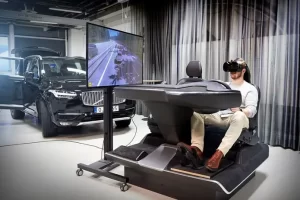Essential Tools for DIY Auto Repair Enthusiasts

No matter your level of auto expertise, having the appropriate tools can make a substantial difference in your experience. From an advanced socket set to versatile pliers, having these essential items on hand in any garage is essential.
This 168-piece mechanic’s tool kit provides all of the essentials every car enthusiast needs to start working on their ride. Among its contents are sockets and ratchets in both standard and metric sizes, screwdrivers, pliers and screwdrivers – everything necessary to start building cars!
Socket & Wrench Set
An essential tool for DIY car enthusiasts, socket and wrench sets allow users to efficiently turn nuts and bolts without resorting to hand tools alone, and can also be combined with power tools like impact wrenches. Look for sets with both SAE and metric sizes as well as 1/4″, 3/8″, and 1/2″” drives as well as multiple types of sockets from standard six point sockets to deep deep sockets that reach into tight spaces.
Some sets offer a hex design suitable for use with Allen wrenches, while others provide access at an angle. You’ll want to find a set that includes impact sockets made of stronger materials than standard sockets for maximum torque loads and improved access at an angle.
Torque wrenches are essential tools, enabling users to set precise bolt torque values safely. Multimeters can help troubleshoot electrical problems and measure voltage, current, and resistance; although a basic digital or click multimeter may suffice in most instances; more advanced models allow you to quickly pinpoint wiring issues or test sensors quickly.
Jack Stands & Hydraulic Jack
No matter if you are an automotive mechanic or DIY enthusiast, having the proper tools can make a world of difference in how easy automotive tasks become. A comprehensive socket set and wrench set is indispensable when dealing with complex automotive tasks such as swapping out spark plugs or tightening down bolts; other essential tools include tape measures for precise measurements as well as multimeters to help detect electrical issues.
A hydraulic jack and stand pair is another key addition to your garage tool kit. Unlike scissor jacks found in most car trunks, hydraulic jacks provide greater stability and load-lifting capacity for more effective and safer maintenance work. Quality jack/stand combos help ensure that no car is dropped accidentally during repairs – safeguarding both itself and its value during this process.
An affordable work light can illuminate dark corners of the garage or beneath your car during maintenance, providing essential visibility of what you’re doing to ensure repairs and maintenance tasks are being completed as planned. Emergency items like duct tape and tire pressure gauge are also beneficial in making hobby work enjoyable, rewarding and hassle-free experiences.
Pliers
Pliers are an essential tool for any DIYer, from pinching wires and bending small parts, to loosening stubborn bolts and even helping to snip off sharp edges that might otherwise cut you. There are various kinds of pliers for different jobs available such as adjustable, needle-nose, and groove-joint types.
Groove-joint pliers feature adjustable jaws with locking mechanisms that can be locked and unlocked to alter the size of gripping sections, making these tools great for loosening nuts and bolts, manipulating larger items like hose clamps and tight spaces than standard adjustable pliers.
Needle-nose pliers feature curved, needle-like jaws designed to firmly grasp objects without leaving marks or slipping away, making them the ideal tool for quickly unhooking hose clamps, handling small parts, and making precise bends without leaving marks or slipperiness behind. Additionally, their slimmer design and less bulky construction often makes them easier on hands. A set of locking pliers may also prove helpful since its handles feature knobs to adjust jaw width – making these versatile than regular general-purpose pliers! Alternatively you could try Raptor pliers which combine features from water pump and adjustable pliers with hex-shaped jaws capable of gripping fasteners like nuts and bolts securely.









